Historical Hanseatic city on the Warnow, craftsman's city, industrial city, seat of an old university and center of a strong bourgeoisie in the past, modern center on the southern Baltic Sea in the present - catchwords, what Rostock was and is, there were and are many. The exhibition looks behind the scenes of the history of the city and its citizens between 1200 and 1850, asking what they lived on, who ruled them, what they believed in, where they lived, what shaped them.
The exhibition invites visitors on a journey through 650 years of Rostock's development. The exhibits tell of political struggles and cultural upheavals, of the lives of the poor and the rich, of times of prosperity as well as of dark chapters in Rostock's city history.

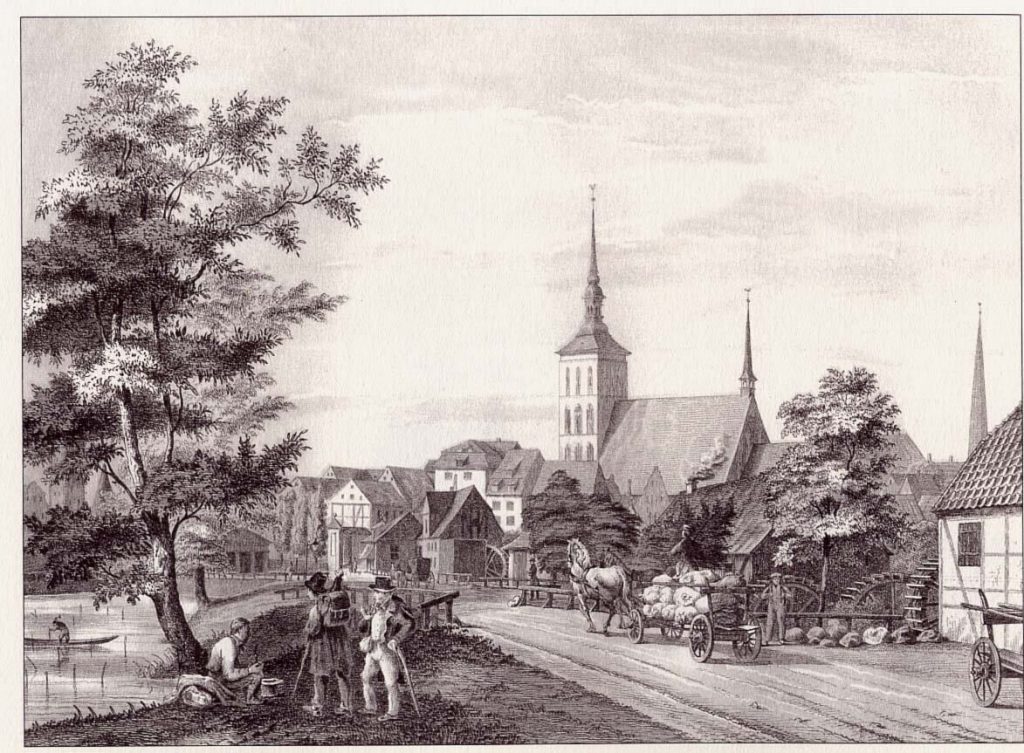
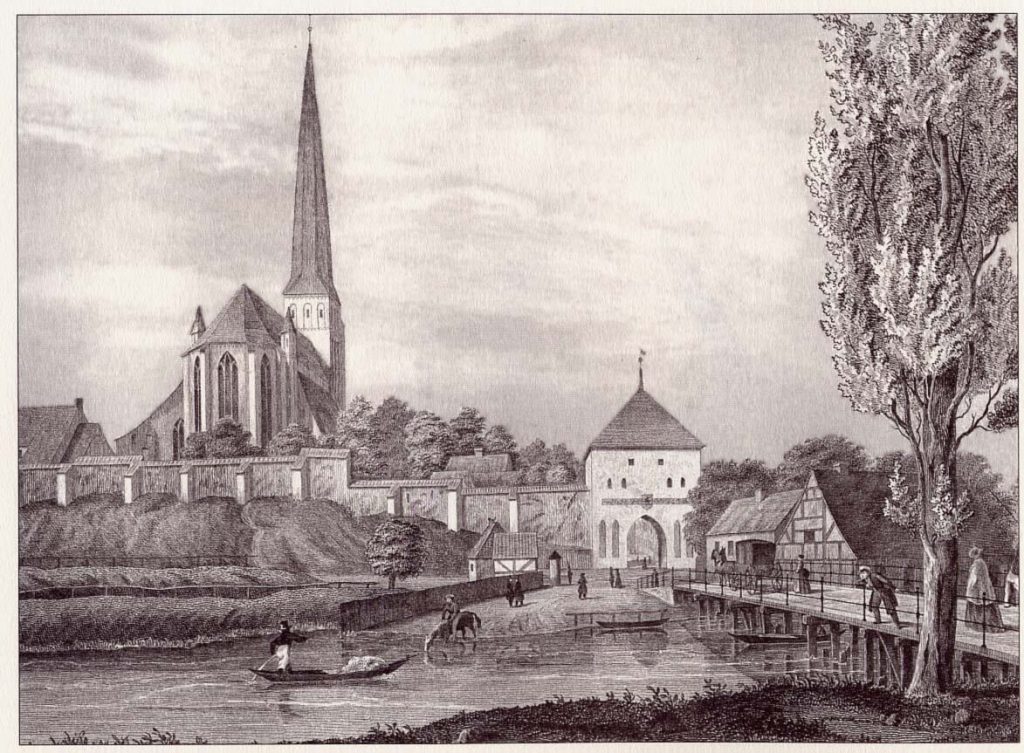
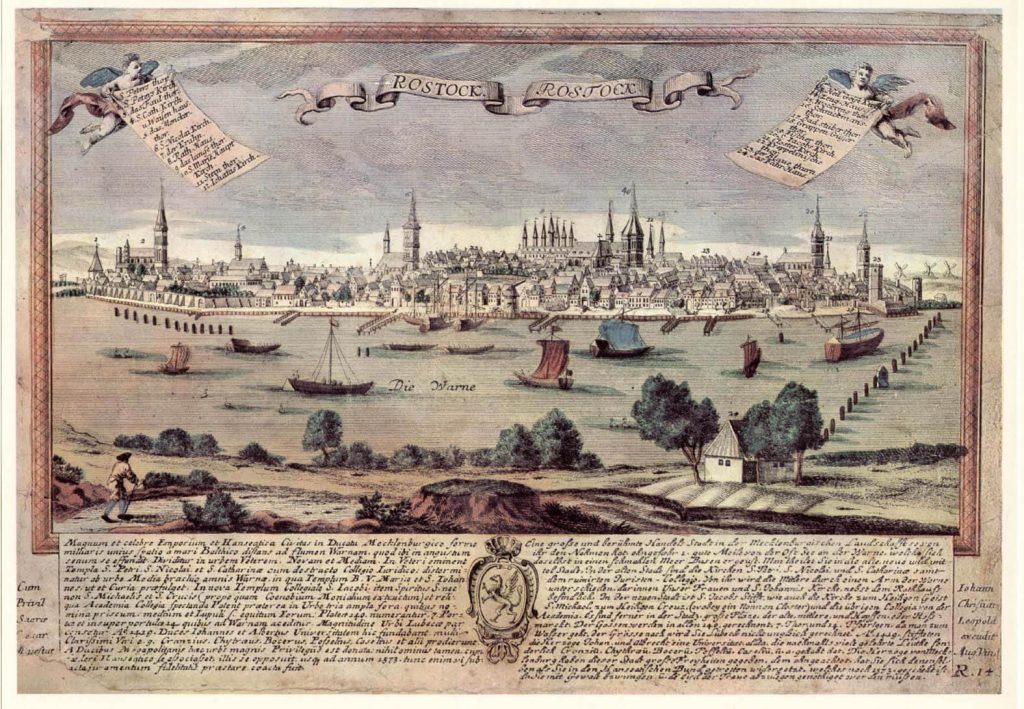
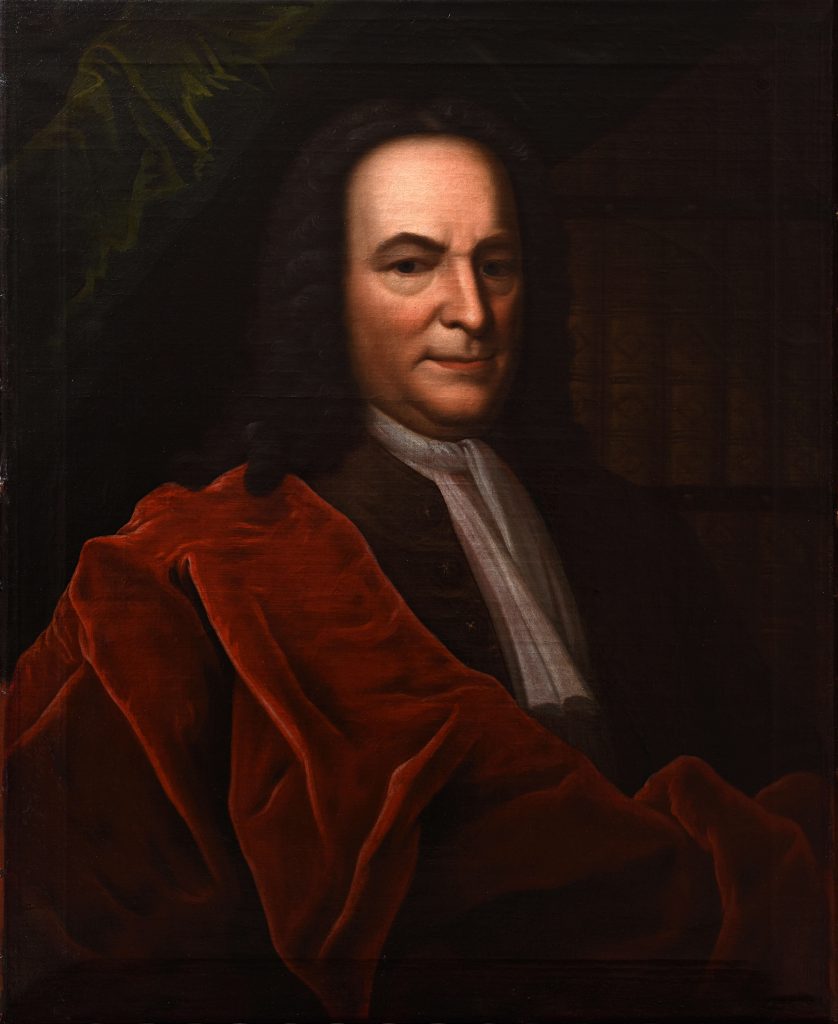
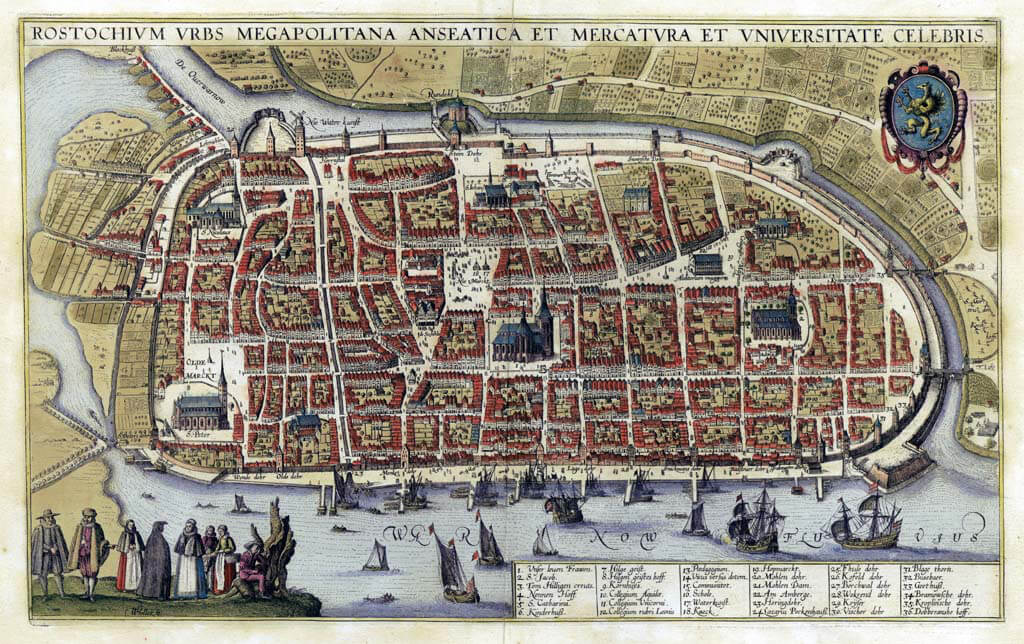

The central exhibit in the permanent exhibition of medieval art in Rostock is the High Altar of the Three Kings from St. John’s Church (Johanniskirche). This altar, consisting of several panels, originally had two sets of wings, of which only one set remains.
The crucifixion scene on the main panel and the figures of saints on the inner sides of the wings display portrait-like features and indicate their origin in Rostock. Other figures of saints, probably from the same altar, suggest that another artist was involved. An altar of the Virgin Mary from St. John’s depicts a madonna surrounded by an aureole (around 1450). A 13th century (about 1270) triumphal crucifix is also from St. John’s and is one of the oldest in Northern Germany. A Throne of Mercy from the middle of the 15th century is from the church of the Holy Ghost Hospital.
The portrait-like style and distinct relation of bodies and robes in the side panels of choir stalls from St. Nicholas’ Church (St. Nikolai) point to the late 15th or early 16th century. The rich collection of medieval works of art from the collection of the Cultural History Museum has been extended by objects from the treasure of the Convent of the Holy Cross.
The collection of Dutch and Flemish paintings is one of the most important in Northern Germany and is unique in the North East. Paintings by artists such as Jan Breughel, Rachel Ruysch or Willem Kalf are complemented by a collection of drawings, among others by Rembrandt and van Dyck.
Unlike the collection of the State Museum in Schwerin, which has its roots in purchases by the Grand Dukes, the Rostock collection came about because townspeople collected works of art. Nonetheless the unusually large number of works provides an overview of the development of painting in the Netherlands since the Golden Age.
Based on gifts by leading Rostock families in the late 19th century, a collection grew that offers an overview of what townspeople collected in the 18th and 19th century.
Most of the works are by Dutch painters, fewer by Flemish masters. Landscapes, genre scenes, still lifes and seascapes were more to the taste of the people of Rostock and their sense of reality than courtly baroque art.
The impressive panorama of the port and Hanseatic city of Rostock can be seen in the views of Rostock dating from the early 19th to 20th century. Paintings by artists such as Georg Friedrich Kersting, Ludwig Hornemann and others not only convey an impression of the city on the Warnow with its four great churches but also demonstrate the importance of the city and show how the face of the city has changed over two centuries. The exhibits give an impression of the work of artists in Rostock and also reveal the cityscape in the past.
With artists such as Oskar Schlemmer, Rudolf Belling, Erich Heckel, Ewald Mataré, Wilhelm Lehmbruck, Lyonel Feininger or Gerhard Marcks the museum presents a selection from the so-called Bernhard A. Böhmer collection. This last complete set of works dates from the Nazi “Degenerate Art“ campaign in 1937.
The exhibition, the accompanying book (in german only) and a film offer insight into the extensive set of works in the collection and also provide evidence of the barbarism of Nazi cultural policies banning works of art and artists in one of the darkest chapters of German history.
Wanderlust or homesickness – landscapes both fascinate and shape people. The mythical Arcadia of antiquity was about living a happy life in idyllic nature. Time and time again, artists transformed those desired destinations of initially the distant South and later the distant North, into arcadian landscapes.
At the end of the 19th century, European artists saw their "accustomed" homeland landscape with new eyes, and painters from the Schwaaner and Ahrenshooper artists' colony were among those who found their motifs in their natural landscape.
Ernst Barlach, the renowned sculptor, sought salvation from a severe crisis of identity and creativity afar in the archaic landscape of the Russian steppe, which inspired a unique style in him, inspiration from which he created his spectacular sculptures in the midst of the Mecklenburg landscape.
This exhibition displays a selection of historical toys from our extensive collection. Model railways, dolls and doll’s houses, toy theatres, children’s books, sets of building bricks and much more besides, convey an insight into the world of children’s play, especially of the upper classes, in the past two centuries.
Until the end of the 19th century dolls were almost exclusively representations of grown-up ladies, beautifully dressed and coiffed. They were not so much intended for mother-and-child play but as an indirect influence on upbringing and as examples for the little girls. Dolls’ houses were often exact miniature copies of the adult macro-world. So the situation in the home could be imitated in play and girls were initiated into their role as a housewife.
Technical instruction, preparation for a career, military ideals and physical training were the aims of the upbringing of boys. They were transmitted by means of steam engines, model railways, building kits, rocking horses and tin soldiers. These toys were considered to be more serious and so fathers were often to be found on the ground joining in the play.
Paper theatres were among the finest toys for both sexes. The exhibition displays the big Urania theatre from 1870 that belonged to a wealthy family in Stralsund. With the help of the figures, scenery and scripts the children could perform about 50 plays of the world’s literature. Candles were moved at the edge of the stage to achieve different lighting effects.
The numismatic collection is more than 100 years old. It comprises about 25,000 items: Rostock coinage of the Middle Ages and later period, coins of the member towns of the Hanseatic League and other municipalities and territories in Northern Germany, ancient and Byzantine coins and historical coins found in the region. There are also medals, including an extensive collection connected with Gebhardt Leberecht von Blücher, and plaster casts of antique and modern cameos, small reliefs and a collection of seals connected witht the history of Mecklenburg.
The applied arts collections comprise about 35,000 items. Pewter, silver, ceramics and clocks are among the most valuable and extensive as are also examples of historical jewellery.
The collections range from the 15th to the early 20th century and document the development of the applied arts. In the collections of the Cultural History Museum ceramics are mainly represented by objects from the later epochs of European ceramics history. There are especially beautiful objects in the three main materials, faience, stoneware and porcelain.
The precious objects of the glass collection include the Lohgerber glasses, enamelled beakers dating from the first half of the 18th century. Made for the Rostock tanners’ guild, the 12 apostle glasses and the Prince Elector’s Tankard are part of the so-called Tanners’ Treasure that also includes 25 pewter vessels and 40 silver plaques. The colourful painting on the glasses is in the Venetian tradition that, although long out of fashion in Venice, continued to be popular in Germany until after 1800.
The pewter collection of the Rostock Cultural History Museum is one of the most important collections of its kind in Northern Germany. The focus here is on the drinking vessels of the Rostock craft guilds.
Welcome cups, so called because they were passed from hand to hand for a welcome drink, are among the most magnificent objects made by Rostock’s pewterers. They were made for the banquets of the city’s craft guilds and are decorated with crests and insignia of the crafts. Silver plaques were hung around the goblets. These were the guild’s nest eggs.
A rococo table clock from Zühr Manor in Mecklenburg and pocket watches made by Rostock clockmakers are proof that lavishly decorated cases were very popular in the 18th century. Classical designs in ebony and alabaster demonstrate the Empire-Style about 1800 and warm mahogany dominates the Biedermeier period when clocks became a common feature of middle-class furnishings. This part of the exhibition finishes with cheap clocks mass-produced in the Black Forest that reached Rostock towards the end of the 19th century making it possible now for poorer households to have clocks.